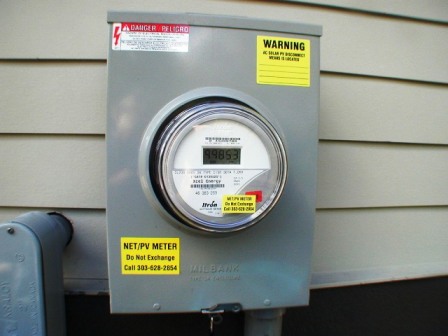electricalperson
Senior Member
- Location
- massachusetts
how do people with these kinds of systems sell power back to the power company?
Normally with a second meter or a net meter.electricalperson said:how do people with these kinds of systems sell power back to the power company?

It depend on how your state ulitility commission or the like sets the laws.electricalperson said:how do people with these kinds of systems sell power back to the power company?
Um. ... yeah. Why wouldn't it? :-? The PoCo wouldn't buy it if you weren't putting it there.electricalperson said:but does it actually put electrical energy on the lines?
I thought "net metering" meant it comes in and goes out at the same rate.cadpoint said:It depend on how your state ulitility commission or the like sets the laws.
I hate percentages but a statement has be made here that your selling it back at whole sale not retail to the utility, A I R
If you're producing more power than you're using, the meter will turn backwards.electricalperson said:im just wondering how it actually does it.
so it actually adds 120/240 volts back on the wires back to the transformer? how does it do it without blowing up?LarryFine said:If you're producing more power than you're using, the meter will turn backwards.
electricalperson said:so it actually adds 120/240 volts back on the wires back to the transformer? how does it do it without blowing up?
im not too familar with any of these kinds of systems i never installed or seen any before. i was having a conversation with a friend about solar panels and wind generators on your house and she said you can sell the power back to the company. i knew they would pay you for that but i was not sure how you can add current on a line that already has current without it being in phase. i guess you add a device that makes the power from the generator being in phase with itpeter d said:The current and voltage you are putting in the grid must be in phase with the utility supplied voltage and current.
You can't. That's why you have a grid tie inverter to sell back power, rather than an ordinary inverter if you're just using it yourself.electricalperson said:i knew they would pay you for that but i was not sure how you can add current on a line that already has current without it being in phase.
electricalperson said:im going to read more about this stuff just to educate myself on the basics on how the system works and whats needed to hook it up
It's amazing how it's able to output power to the utility and sense when the utility power drops.iwire said:But as the others have said the inverter matches the grids characteristics before becoming active. If the utility has a power outage the inverter sees that and stops producing power so that it will not potentially hurt the power company workers.
LarryFine said:It's amazing how it's able to output power to the utility and sense when the utility power drops.
cadpoint said:It depend on how your state ulitility commission or the like sets the laws.
I hate percentages but a statement has be made here that your selling it back at whole sale not retail to the utility, A I R
